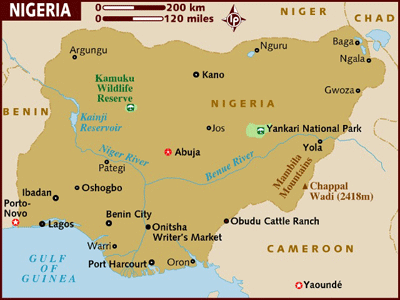
The Nigerian regional system was once a beautiful political structure that governed every facet of Nigerian life. This structure successfully held sway in the West, North, and East until 1966. It began to disintegrate after the coup that led to the assassination of its prime minister, Sir Abubakar Tafawa Balewa, and other prominent Premiers and politicians. Today, this government falters even in the eastern part of the country, where it was most influential. I have my thoughts on the proposed regional government in Nigeria and lay out the advantages and disadvantages of changing the present system.
The proposed regional government would implement self-determination for constituent political regions and provide a voice for each state. This system would allow every region to elect its representative lawmaker. Everyone would have a right to vote as voters in their respective regions participate in decision-making. However, there would be a national leader who would supervise or oversee the activities of each state. These national leaders would work together in harmony and contribute to the country’s growth. But how will this structure function?
The three major regions, namely, Western, Eastern, and Northern regions, have long obeyed the government’s written constitution and enjoyed self-rule. The traditional institutions in each region would maintain their structures at a state level, but this would not negate the unity between the northern and southern elites. All government agencies in the regions would focus on developing the states they serve.
Since the federal government has invested in the state’s economic development, many jobs will be secured. Evidently, if elected officials in every region supported the ruling party, they would all work together to develop their respective states. Additionally, the issues affecting each state would be addressed at the state level rather than referred to the Supreme Court and Court of Appeals. These changes will enhance the judiciary, constitutional and legal growth of the states if they heed the advice of their respective rulers. Each region would bring the best out of its culture, and this would contribute to the success of the Federated States of Nigeria.
However, a few risks might arise from this new arrangement.
Nigeria’s current governance format has received much criticism, and box offices of proposed reforms are not as relevant as the current discussion about transforming to a regional government. A multi-ethnic and multi-religious country of more than 200 million people, over 250 ethnic groups and multitudinous different cultural identities, Nigeria’s configuration of governance is a scandal of the country’s diversity but also a curse to the challenges of its political and economic development. Despite its stated objectives of decentralisation of power and fostering unity, the present format of a federal government has been flared as a curse to efficiency, corruption and unequal/disparate development of states.
One response to these problems has been to advocate a return to decentralised regional forms of government. They think this would offer the positive qualities of more tailored governance and healthy competition between regions and so promise to reduce ethnic tensions. Opponents have countered that movement toward more facility-based regional administration would almost certainly lead to greater regional inequality, create onerous administrative burdens, and threaten national unity.
However, the critical theoretical question that needs to be answered is: Would such a shift bring about the collapse or absorption of the 36-state structure into more homogenous short-of-federal regions, or would Nigeria transform her government structure into four-layers, made up of federal, regional, state and local? For instance, the answer will provide the clue to whether state and local governments will be gobbled up by the new region or the O’odua region will comprise the south-west being taken out of the present six-state structure, as well as some other states, while representing an arm of the central or federal government; or how each of the three modern regions will align her strength on the floor of the House of Representatives and the senate; or will Osun, which is now a state, be absorbed by O’dua or a region considering all these factors?
This article serves the purpose of assessing the feasibility of shifting Nigeria’s system of governance structure into a regional government system by investigating and comparing its positive and negative aspects equally. The article also examines the significant role of the current structure of the states in determining the inherent possibility of this shift in arrangement and the ease or otherwise the demographic groups find it to merge. In light of these, I will, in conclusion, examine the effects the existing arrangement is having on governance, development and national cohesion and argue that with luck, this regional government arrangement stands to offer more benefits than drawbacks but must be thought out carefully so not to consolidate the problems of the country.
The impact of the current state structure on the proposed regional government
The introduction of the state structure, which was meant to expand the government to the population and reduce the influence of big regions, thereby reducing ethnic and regional marginalisation and domination, introduced these problems at the cost of certain gains, some of which have a direct bearing on the possibility of a system of regional governments.
To be continued tomorrow.
D. Oluwadele is an Author, Chartered Accountant and Public Policy Scholar based in Canada. He can be reached via:[email protected]






